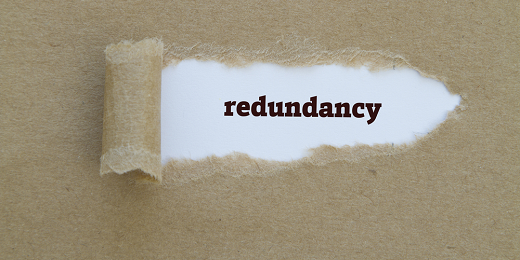Who Pays Redundancy Money? A Comprehensive Overview for Employers and Employees
Who Pays Redundancy Money? A Comprehensive Overview for Employers and Employees
Blog Article
Checking Out the Operational Dynamics of Firm Redundancy and Its Long-Term Sustainability

Redundancy Approaches for Business Continuity
In order to ensure undisturbed operations, organizations need to apply effective redundancy techniques for business connection. Redundancy in this context describes the replication of crucial parts or functions within a system to minimize the impact of prospective failures. By incorporating redundancy methods, companies can boost their durability against disturbances brought on by numerous aspects such as all-natural calamities, devices failures, or cyber-attacks.
One usual redundancy method is the execution of back-up systems and information storage options. This includes creating matches of vital information and systems that can be triggered in instance of a primary system failure. Additionally, companies can establish repetitive communication channels and power sources to preserve connectivity and procedures during unanticipated events.
Furthermore, cross-training workers to carry out multiple duties within the firm can work as a valuable redundancy approach. If vital employees are not available due to health problem or other factors, this makes certain that crucial tasks can still be carried out even. In general, reliable redundancy techniques are necessary for businesses to support functional continuity and decrease the influence of possible interruptions.
Influence of Redundancy on Organizational Durability
Offered the important role redundancy strategies play in making sure business continuity, discovering the influence of redundancy on organizational strength comes to be critical for recognizing the all natural functional dynamics of a business. Organizational durability refers to an entity's capacity to adapt to interruptions, recuperate from setbacks, and change when required while preserving core features. Redundancy, when tactically executed, can significantly add to enhancing an organization's durability despite unanticipated difficulties. By having backup systems, employees, or processes in position, firms can better withstand shocks and continue procedures with minimal disturbance.
Furthermore, redundancy can promote technology and imagination within an organization as staff members really feel encouraged to take calculated dangers, knowing that there is a safety and security net to sustain them in situation of failing. Generally, the influence of redundancy on organizational strength is profound, shaping the long-lasting sustainability and success of a business.
Balancing Performance and Adaptability in Redundancy
Attaining a harmonious stability in between operational effectiveness and flexible adaptability is a critical obstacle in the tactical deployment of redundancy within organizations. As well much adaptability without a solid functional structure can result in inefficiencies and variance.
To stabilize efficiency and versatility in redundancy preparation, organizations need to meticulously analyze their operational demands, market characteristics, and critical goals. Inevitably, locating the appropriate equilibrium between effectiveness and flexibility is critical for constructing a resilient and lasting organization in the face of uncertainty.
Long-Term Sustainability Through Redundancy Planning
To make sure long-lasting stability and security, companies need to purposefully straighten their redundancy planning with lasting sustainability objectives, thereby balancing operational effectiveness with adaptive flexibility. Lasting sustainability with redundancy preparation entails more than simply temporary cost-cutting actions. It requires a comprehensive tactical strategy that prepares for future obstacles and possibilities. Companies need to see redundancy not as a responsive service to prompt issues but as a proactive method for lasting success. By incorporating redundancy preparation with sustainability objectives, organizations can create a resilient structure that can hold up against numerous market variations and interior modifications.

Proactive Procedures for Sustainable Company Procedures
Just how can business proactively boost their small business closing employee rights uk functional sustainability for long-term success? Implementing positive actions is crucial for business intending to ensure lasting procedures. One vital technique is to buy innovation and innovation to simplify processes, decrease waste, and remain affordable in the marketplace. Embracing lasting techniques such as minimizing power consumption, decreasing carbon footprint, and maximizing resource utilization can not only profit the setting however also cause cost savings in the future.
Furthermore, cultivating a culture of continual improvement and discovering within the organization can enhance adaptability to changing market problems and client demands. Encouraging staff member involvement in decision-making procedures and offering possibilities for expert advancement can improve spirits, efficiency, and general performance. Developing clear goals, monitoring essential efficiency indications, and routinely examining development are important parts of positive sustainability management.
Working together with providers, clients, and various other stakeholders to advertise lasting techniques throughout the supply chain can develop a causal sequence of favorable effect - redundancy pay if company goes bust. By taking aggressive actions towards functional sustainability, firms can develop durability, drive innovation, and protect their long-term success in an ever-evolving company landscape
Conclusion

In the realm of organizational monitoring, the strategic deployment of company redundancy stands as an essential yet elaborate technique that necessitates a delicate equilibrium in between operational effectiveness and long-term stability. By dissecting the operational characteristics that underpin firm redundancy and reviewing its more comprehensive effects for organizational strength and versatility, a nuanced understanding of how redundancy methods can shape the future trajectory of a company starts to unravel.Offered the crucial function redundancy methods play in making sure business connection, exploring the impact of redundancy on business durability ends up being necessary for recognizing the holistic functional characteristics of a firm. In general, the influence of redundancy on organizational resilience is profound, forming the lasting sustainability and success of a firm.
In final thought, understanding the functional characteristics of business redundancy is crucial for making sure lasting sustainability.
Report this page